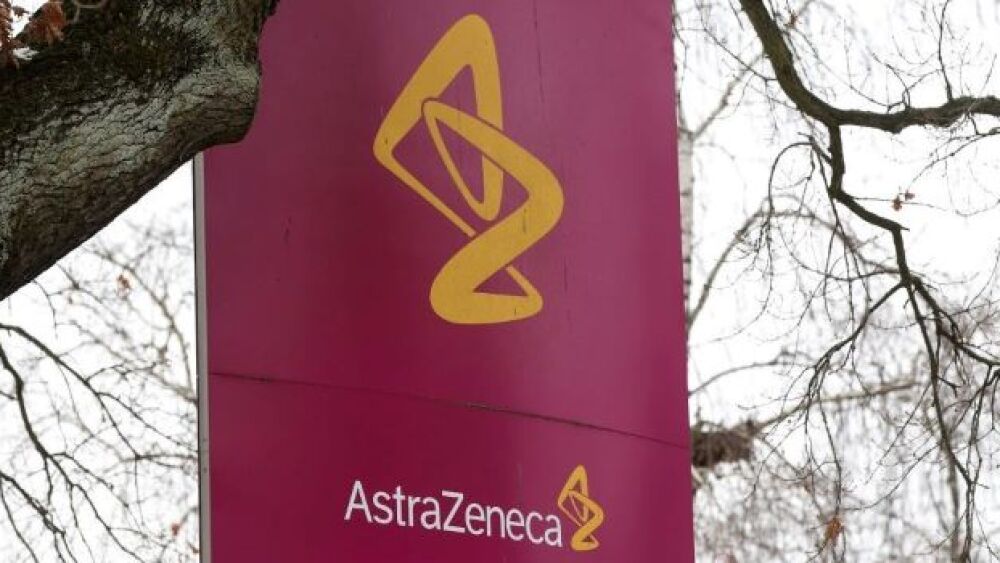The total revenue for the quarter was $9.74 billion, a leap of 47%. The COVID-19 vaccine, Vaxzevria, only contributed 1% to the company’s profit.
Bodo Marks/picture alliance via Getty Images
Today AstraZeneca reported its third-quarter financials, citing COVID-19 vaccine sales of $1.05 billion. The total revenue for the quarter was $9.74 billion, a leap of 47%. The COVID-19 vaccine, Vaxzevria, only contributed 1% to the company’s profit for the quarter, although it said it is expected to move to “modest profitability” on new orders.
Earlier this week, AstraZeneca announced that it was planning a new, separate division for vaccines and antibody therapies, with a focus on the COVID-19 vaccine it developed with the University of Oxford.
Pascal Soriot, AstraZeneca’s chief executive officer, stated, “AstraZeneca’s scientific leadership continues to provide strong revenue growth and exceptional pipeline delivery, with eight positive late-stage readouts across seven medicines since June, including our long-acting antibody combination showing promise in both prevention and treatment of COVID-19.”
From the beginning of developing the COVID-19 vaccine with the University of Oxford, AstraZeneca had emphasized that it intended to focus on low- and middle-income countries and that profits were not the top priority. Soriot had said, “We decided to provide it at no profit, because our top priority was to protect global health.”
AstraZeneca reported it would begin making money from the COVID-19 vaccine when it was no longer a pandemic. Soriot has indicated the disease was becoming endemic but would continue supplying the vaccine to poorer countries on a not-for-profit basis. He told the BBC he had “absolutely no regrets” about not making a profit when its competitors were. “I absolutely don’t regret it. We are proud as a company of the impact we have had — we’ve saved millions of hospitalizations. The [AstraZeneca] team continues to do a stellar job.”
A typical profit margin for vaccines is about 20%, but AstraZeneca has charged about $5 per shot for the COVID-19 vaccine at cost. For comparison, Moderna’s prices range from $25 to $37 per dose, China’s Sinovac $13.6 to $29.75, Johnson & Johnson $10, Pfizer-BioNTech $18.34 to $19, and Russia’s Sputnik V at $10.
Sales of the AstraZeneca-Oxford vaccine are markedly behind Pfizer-BioNTech, which reported $11.1 billion in its vaccine (Comirnaty) for the quarter, Moderna’s $5 billion (Spikevax), although double that of Johnson & Johnson, which reported $502 million for the third quarter.
In its quarterly report, AstraZeneca said it expects to “progressively transition the vaccine to modest profitability as new orders are received.” The sales in the fourth quarter of the year will be a combination of original pandemic agreements and new orders, with the majority from the pandemic agreements. They also say that the vaccine profitability will be limited and is “expected to offset costs relating to the Company’s long-acting antibody combination (AZD7442).”
In mid-2020, AstraZeneca and the University of Oxford seemed to be ahead of the other vaccine manufacturers. The vaccine uses a chimpanzee viral vector that does not cause infections in humans and delivers genetic material coding for the COVID-19 virus’s spike protein.
In the spring of 2021, there were reports of the vaccine being linked to blood clots, specifically deep vein thrombosis and pulmonary embolism. Incidents were rare, and after being paused in dozens of countries, distribution has resumed where authorized. The company reports that with its partner, India’s Serum Institute, it has distributed more than 1.3 billion doses globally.
The restructuring, according to one source, reported The Financial Times, was “simply a pooling of resources and leadership for a number of assets in the portfolio and does not signal a direction of travel for the vaccine.”
As Soriot noted, the company appears to be focusing on its long-acting antibody (LAAB) combination against COVID-19, AZD7442. In a recent Phase III TACKLE trial, it demonstrated a statistically significant drop in severe COVID-19 or death compared to placebo in non-hospitalized patients with mild-to-moderate COVID-19.
Compared to placebo, in a prespecified group of patients who received the antibody cocktail within five days of symptom presentation, the treatment decreased the risk of severe disease or death by 67%. Because it is an intramuscular injection, while other antibody treatments require infusions, it will have an advantage in the marketplace if approved. The company requested Emergency Use Authorization (EUA) from the FDA on October 5.
On a per-share basis, AstraZeneca reported a loss of 55 cents. Earnings, adjusted for non-recurring costs, were 54 cents per share. The quarter, in general, had a loss of $1.65 billion, which did not hit Wall Street projections. A survey of three analysts reported by Zacks Investment Research had estimated 63 centers per share. Overall, shares rose 26% since the beginning of the year and more than 8% in the last 12 months.





